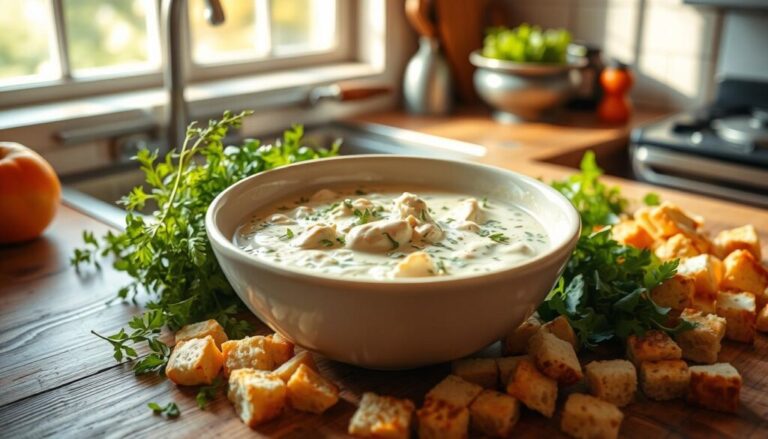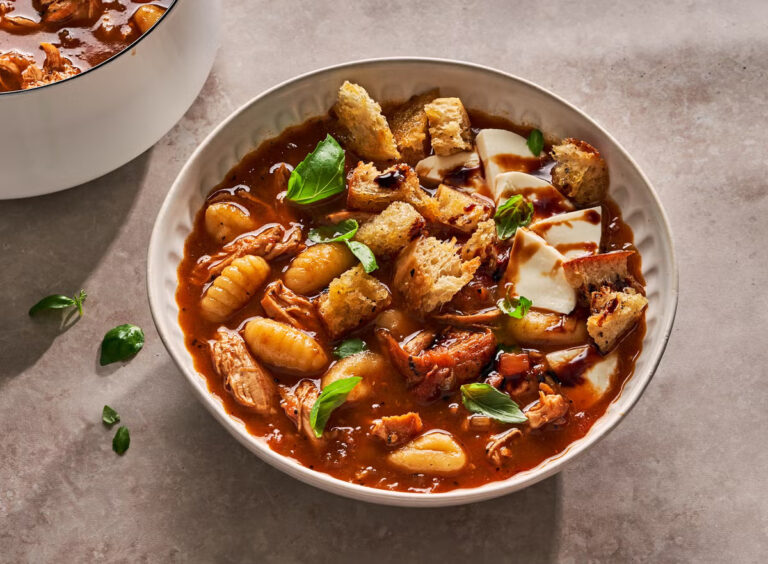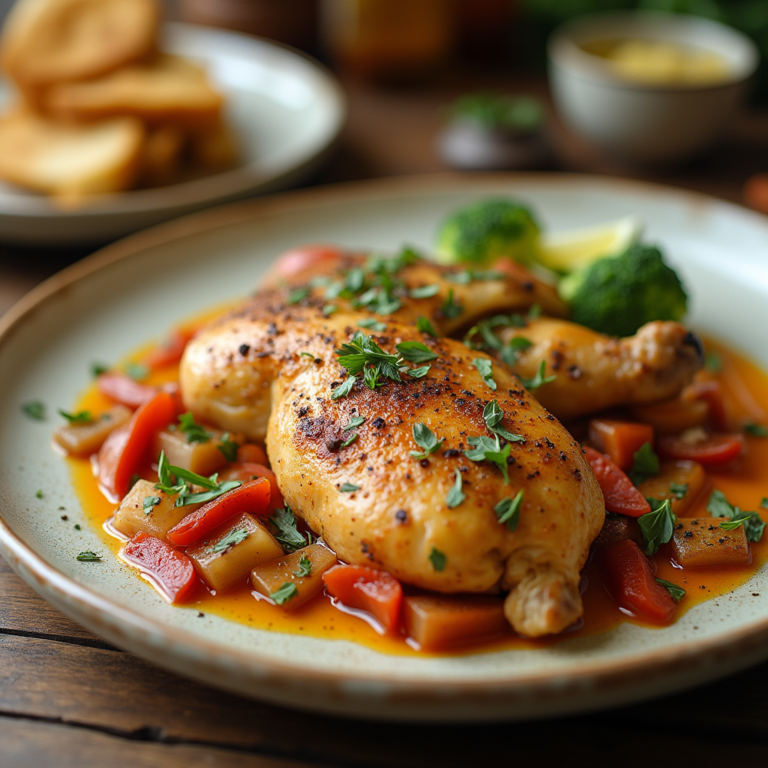Delicious Brine Chicken Thighs
Delicious Brine Chicken Thighs As I pulled the golden-brown chicken thighs out of the oven, the kitchen filled with a delicious smell. I couldn’t wait to taste them. The meat was so tender and juicy, it almost fell off the bone. I had finally mastered the art of brining, and the results were amazing.
If you’ve had dry, lackluster chicken before, don’t worry. Brining is the secret to moist, flavorful chicken thighs. In this article, I’ll share six foolproof tips to help you brine your chicken thighs perfectly.
Brining is a simple yet powerful technique. It infuses your chicken with moisture and flavor. By soaking the meat in a saltwater solution, you create a protective barrier. This barrier helps lock in juices during cooking. The result? Tender, juicy chicken thighs that are bursting with taste.
Whether you’re grilling, roasting, or frying your chicken, brining is key. It unlocks the full flavor potential of your chicken. So let’s dive in and explore the secrets to brining chicken thighs for truly mouthwatering results.
Why Brining is Key to Perfect Chicken Every Time
Brining is a key technique for making brine chicken thighs perfect every time. It involves soaking the meat in a salt-based solution or using a dry poultry brining rub. This method greatly improves the chicken’s moisture and texture.
Brining adds extra moist chicken, making cooking more forgiving. It prevents overcooking and dryness. The result is tender, flavorful chicken with a great mouthfeel.
How Brining Transforms Chicken
Brining is about soaking chicken in a salty solution or using a salt-based rub. This simple step starts a series of chemical reactions. These reactions greatly enhance the juicy chicken thighs and tender chicken texture.
- The salt in the brine breaks down chicken proteins. This lets them absorb and hold more moisture during cooking.
- This process adds extra water to the meat. It acts as a shield against heat drying.
- Brining also seasons the chicken from the inside out. This ensures every bite is full of flavor.
The outcome is chicken that’s juicy, tender, and full of flavor. It’s a big difference from the dry, stringy poultry that can happen with bad cooking.
“Brining is the secret to achieving the most tender and flavorful chicken every single time.”
Understanding the Basics of Brining
Brining is a simple yet powerful technique that can transform the way you prepare chicken, especially lean cuts like chicken breasts. At its core, brining works by allowing salt to break down some of the proteins in the meat. This helps the chicken absorb and retain more moisture. The brine penetrates deeply into the muscle fibers, ensuring every bite is juicy and flavorful.
The science behind how brining works is fascinating. When salt dissolves in water, it creates a saline solution that alters the protein structure of the chicken. This allows the meat to trap more moisture within the muscle fibers. The brining process doesn’t just affect the surface – it goes all the way through. This makes brining chicken breasts an especially effective way to keep them from becoming dry and tough.
One of the key benefits of brining chicken is that it creates a more forgiving cooking process. Even if you slightly overcook the chicken, the extra moisture retained from brining will help prevent it from becoming dry and unpalatable. This makes brining an invaluable technique for home cooks who want to ensure juicy, flavorful chicken every time.
What Brining Does to Your Chicken
Brining is a game-changer for cooking chicken. It adds moisture, flavor, and texture. Let’s explore how brining makes your chicken thighs special.
Brining works by breaking down chicken proteins with salt. This lets the chicken soak up more moisture. So, your chicken becomes plump, juicy and stays tender and flavorful.
Brining also lets you add flavors like herbs and spices to the chicken. As it soaks, it picks up these tastes. Your chicken will have a delightful depth of flavor that’s amazing.
The texture of brined chicken is also improved. It comes out moist inside and crispy outside. This mix of textures makes your chicken truly great.
Brining is key for roasting, grilling, or frying chicken. It’s a simple trick that makes your chicken juicier and more flavorful every time.
The Science Behind Juicier, Tastier Chicken
Brining makes chicken juicy and full of flavor. It works by changing how salt interacts with chicken proteins. Salt dissolves in water, creating a solution that changes the chicken’s muscle fibers.
This change lets the chicken hold onto water better. During cooking, this water helps keep the meat moist. It also spreads flavors evenly inside the chicken. Brining can be quick, taking just 30 minutes.
The Brine Solution
The basic brine for chicken has 1 cup of kosher salt per 1 gallon of water. You can add sugar, herbs, spices, and aromatics for extra taste. Chicken breasts or tenders need 4-6 hours in the brine, while thighs need 6-12 hours.
Whole chickens or big cuts need 12-24 hours. Keep the brine between 35°F and 40°F for best flavor absorption. After brining, rinse the chicken under cold water and dry it with paper towels to keep it juicy.
“Brining helps chicken cook more evenly, preventing the meat from drying out during cooking.”
The science of brining is simple but powerful. It changes the chicken’s proteins to hold more moisture. This makes your chicken dishes juicier and more flavorful. With a bit of prep and the right method, your chicken recipes will taste amazing.
Choosing the Right Salt for Brining
The type of salt you pick for brining can really change the taste and texture of your chicken. Kosher salt and table salt are two common choices. Each has its own special qualities that can affect your dish.
Kosher salt is the top pick for brining. Its big grains and lack of additives make it perfect. The slow dissolving of kosher salt ensures even distribution in the brine. This leads to a chicken that’s both flavorful and tender.
Table salt, on the other hand, is finer and often has additives. These can mess with the brine’s clarity and taste. If you use table salt, you’ll need to use less because it’s more concentrated than kosher salt.
- Kosher salt: Preferred choice for brining due to its coarse texture and lack of additives.
- Table salt: Finer and often contains anti-caking agents that can affect the brine’s clarity and flavor.
Choosing the right salt for brining depends on what you like and what you want your chicken to taste like. Most people prefer kosher salt, but table salt can work well if you adjust the amount.
“The type of salt you use in the brining process can have a profound impact on the final flavor and texture of your chicken.”
Table Salt vs Kosher Salt: What’s Best?
Choosing the right salt for brining chicken is crucial. Kosher salt is the top pick for its benefits over table salt.
Kosher salt’s coarse texture and absence of additives make it perfect for brining. Its larger grains dissolve slowly, spreading evenly in the brine. This slow dissolution ensures the chicken absorbs the flavors deeply, making it juicy and flavorful.
Table salt, on the other hand, is finer and often has additives. These additives can cloud the brine and alter its taste. If you use table salt, remember it’s more concentrated than kosher salt. You’ll need to adjust the amount you use.
| Kosher Salt | Table Salt |
|---|---|
| Coarse texture, no additives | Fine texture, often contains anti-caking agents |
| Granules dissolve slowly, allowing for even distribution | Dissolves more quickly, potentially affecting brine clarity and flavor |
| Preferred choice for brining due to its superior performance | Requires adjustments in quantity when used for brining |
The main difference between kosher salt for brining and table salt for brining is their ability to create a balanced brine. This brine infuses your chicken with moisture and flavor. By picking the right salt type differences for brining, you can make your chicken brining better. Enjoy juicier, tastier chicken every time.
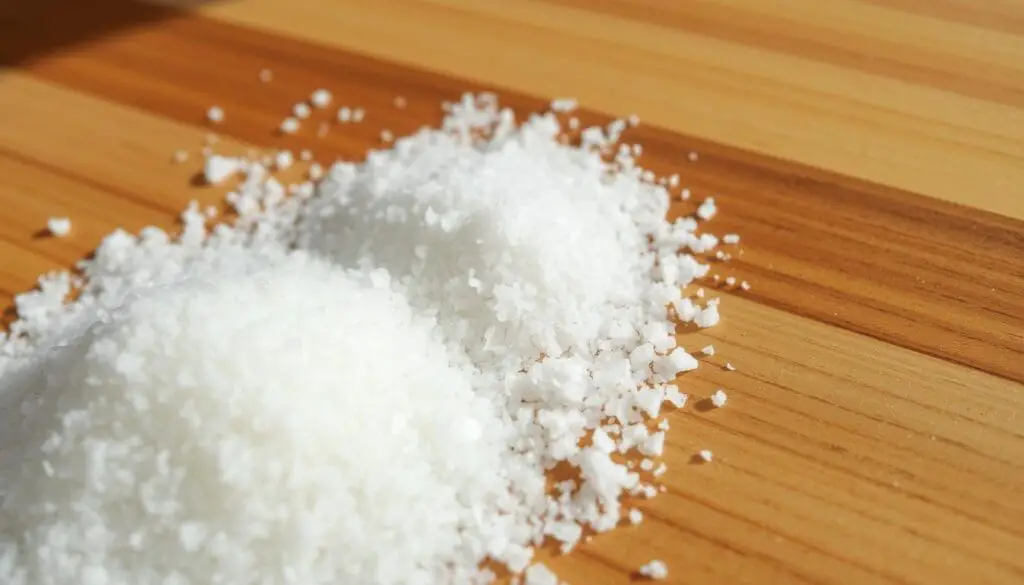
How to Brine Chicken Thighs
Brining chicken thighs makes them juicy and flavorful. It’s a simple process where you soak the chicken in a saltwater mix. This lets the meat soak up moisture and seasonings, enhancing the taste.
To start, mix 1/4 cup of kosher salt into 4 cups of water until it’s dissolved. You can add garlic, herbs, or spices to the brine for extra flavor. Then, put the chicken thighs in a big container or bag and pour the brine over them. Make sure the meat is covered.
Put the container in the fridge for 4 to 6 hours. The salt breaks down proteins and keeps the chicken moist. After brining, rinse the thighs under cold water and dry them with paper towels before cooking.
The secret to great brined chicken thighs is the right mix of salt, time, and temperature. Follow these steps for juicy, tasty meat that will wow everyone. Enjoy your delicious results!
The Ideal Brining Time for Chicken
Brining makes chicken juicy and flavorful. But, how long should you brine it? It depends on whether you’re using chicken pieces or a whole bird.
Brining Time for Chicken Pieces
For chicken thighs, drumsticks, or breasts, brine for 4-6 hours. This lets the salt solution get into the meat. It breaks down proteins and keeps the chicken moist while cooking.
Brining Time for Whole Chickens
Brining a whole chicken takes longer. You should brine it for 8-12 hours. The thicker parts, like legs and thighs, need more time to soak up the brine.
Don’t brine chicken too long. It can become mushy and too salty. Stick to no more than 24 hours of brining, for any chicken type.
“Brining is the secret to juicy, tender chicken every time. Just a few hours in the brine makes all the difference.”
By brining for the right amount of time, your chicken will be moist and full of flavor. This works for chicken thighs, breasts, or a whole roasted chicken.
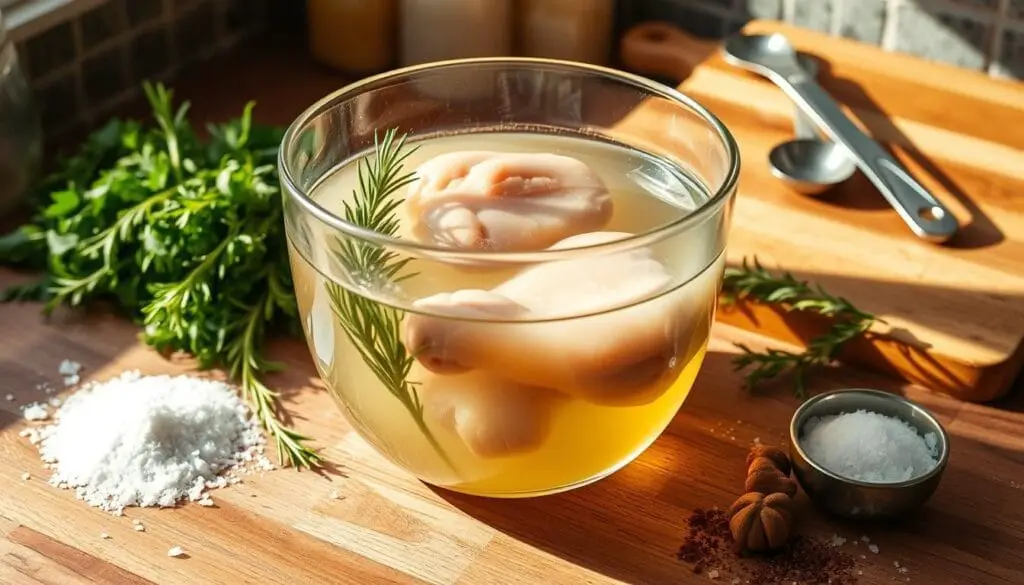
Brining Chicken Safely
When brining chicken, safety is key. Bad handling or storage can spread harmful bacteria. This can risk your health. To keep your brined chicken safe, follow these important steps:
- Brine in the Refrigerator: Never brine chicken at room temperature. The fridge keeps it safe from harmful bacteria. Make sure the chicken is fully covered in brine and the container is sealed tight.
- Observe Brining Time: Stick to the recommended brining time. Chicken pieces need 4-6 hours, while whole chickens need 8-12 hours. Don’t brine for more than 24 hours to stay safe.
- Use a Food-Grade Container: Pick a non-reactive, food-safe container. Use plastic, glass, or stainless steel. Stay away from containers that could leak harmful chemicals into the brine.
- Discard Used Brine: After brining, throw away the used brine. Don’t reuse it, as it might have harmful bacteria.
- Rinse Before Cooking: Rinse the brined chicken under cold water before cooking. This removes extra salt and brine.
By following these easy steps, you can safely brine your chicken. You’ll get juicy, flavorful results every time.
The Importance of Proper Brining Practices
Brining makes chicken juicy and flavorful, but it must be done safely. Ignoring food safety can spread harmful bacteria like Salmonella or Listeria. These can cause serious illnesses. By being careful, you can make sure your brined chicken is delicious and safe to eat.
Cooking Brined Chicken for Best Results
When cooking brined chicken, picking the right method is key. High-heat methods like roasting, grilling, or pan-searing are best. They seal in juices and flavors.
Here are some tips for cooking brined chicken:
- Roast it. Roasting at 450°F crisps the skin while keeping the meat juicy.
- Grill it. Grilling caramelizes the outside, creating a char and keeping the inside moist.
- Pan-sear it. Pan-searing in a hot skillet gives a golden crust and a juicy interior.
Use a meat thermometer to ensure the chicken reaches 165°F. This ensures food safety. With the right method, your brined chicken will be a hit.
| Cooking Method | Temperature | Cook Time | Internal Temperature |
|---|---|---|---|
| Roasting | 450°F | 55-60 minutes | 165°F |
| Grilling | High Heat | 20-25 minutes | 165°F |
| Pan-Searing | Medium-High Heat | 6-8 minutes per side | 165°F |
Brined chicken is forgiving when cooking. The extra moisture and seasoning make it juicy and flavorful, no matter how you cook it.
Conclusion
Learning to brine chicken is a big step up in cooking. It makes your chicken juicy, flavorful, and tender. You can choose between wet or dry brining to make your chicken dishes better. This simple trick will make your food taste amazing and impress everyone.
Brining can take as little as 30 minutes or up to 24 hours. This means you can fit it into your busy schedule. You can also play with different brine ingredients to make your chicken taste just how you like it. This makes every dish special and unique.
Start using brining chicken to make your meals better. You’ll get chicken that’s juicy, flavorful, and tender. Your family and friends will love it. You’ll become a better cook and make everyone happy with your delicious dishes.
FAQ
What is the science behind brining chicken?
Salt dissolves in water to make a saline solution. This solution changes the chicken’s muscle fibers. It helps the fibers hold onto water molecules.This keeps the meat juicy and flavorful, even when it’s cooked. It stops the usual moisture loss that happens with heat.
Why is kosher salt the preferred choice for brining?
Kosher salt is best for brining because of its coarse texture and lack of additives. Its large grains dissolve slowly, spreading evenly in the brine.Table salt is finer and may have additives. These can mess up the brine’s clarity and taste.
How long should I brine chicken thighs?
Brine chicken thighs for 4-6 hours for the best results. Thicker chicken might need a bit longer. But don’t brine for more than 24 hours.Doing so can make the chicken too salty or mushy.
How do I safely brine chicken?
Brine chicken in the fridge to avoid harmful bacteria. Make sure the chicken is fully covered in the brine. Also, seal the container tightly.
What cooking methods work best for brined chicken?
Brined chicken is great with high-heat cooking like roasting, grilling, or pan-searing. These methods help keep the moisture in and boost the flavors from brining.


